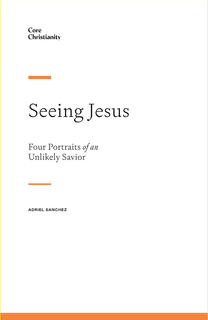Parables are short narratives that reveal spiritual truth in terms of everyday things. Jesus often taught in parables about the kingdom of God, and these were recorded within the larger narratives of the first three Gospels, Matthew, Mark, and Luke. Their narrative and symbolic character can make them harder to understand and apply, but a little attention to their context, nature, and function can go a long way to make them easier to grasp and learn from. We can be confident that as part of God’s word they are for our instruction and salvation (2 Tim. 3:16–17).
Context of the Parables
First, the placement of a parable within the larger Gospel narrative is critical. Jesus told parables about his own ministry and in response to the interactions that arose between him, his disciples, the religious leaders, and others. These interactions therefore clarify the meaning and purpose of the parable. In fact, there’s often such a close tie between the parable and what’s happening at that moment in the larger narrative that the parable may even provoke the very action it illustrates. For example, the parable of the tenants ends with the landlord sending his son to gather the fruits of his vineyard, but the tenants kill the son. The Pharisees immediately understood he was talking about them and responded by plotting his arrest, proceeding toward the very murder illustrated in the story.
Also, Jesus originally spoke these parables to a first-century Jewish audience, which means he put them in terms that were familiar to them. That’s why we see so many aspects of life as they knew it: agriculture, land tenants, masters and servants, sheep, etc. Learning about what these meant to the original audience can help us grasp the meaning of the parable and apply it to our own lives.
Old Testament context would also have been familiar to Jesus and his hearers. For example, when Jesus spoke of a vineyard in the parable of the tenants, his hearers would have known he was alluding to Isaiah 5, in which God described Israel as his vineyard, reproached them for their bad fruit, and threatened to bring judgment.
Symbolism of the Parables
Parables compare spiritual things to the things of this world, which turns those everyday things into symbols of spiritual truth. When Jesus explained the parable of the sower to his disciples, he identified the seeds as the word of God and the types of soil as people who respond variously to the word (Matt. 13). Understanding parables therefore requires following their symbolism, including not only what the persons or objects refer to, but what values and changes are at work in them. For example, the parable of the sower contains a movement of growth from seed to harvest that pictures the growth of God’s kingdom. These movements are often characterized by the extravagant or extraordinary (for example, crops that produce a hundredfold) that indicate that God’s kingdom exceeds this world and its ordinary terms. [1]
Function of the Parables
As a form of God’s word, parables are powerful and have effects in the hearers (Isa. 55:10–11; Heb. 4:12–13). The effect is varied, however, as seen in the parable of the sower. Again, the context is important. Jesus had taught plainly and performed many works of healing, but the Pharisees said he did this by the power of the evil one (Matt. 12:24). Jesus then told a parable about how God’s word is rejected by some but fruitful in others. He ended with “he who has ears, let him hear,” and explained the parable in private to his disciples. This parable illustrated what was happening in the larger narrative: God’s word was sorting Jesus’ hearers into those who hardened themselves and would face judgment and those who heard and were healed.
The parables, therefore, have various functions. They can bring both judgment and salvation, and they can elicit a response of faith or rejection, and often a corresponding action, such as bearing fruit or plotting the death of Jesus. The context of the parable of the sower shows that judgment was especially directed at those in Israel who refused to listen to Jesus. To his disciples, on the other hand, Jesus revealed the meaning of the parables, and this was written down for the instruction of all those who continue to hear his voice and believe.
What Does the Bible Say?
- Context from Isaiah: Isa. 5:1–7, 6:8–13
- Parables of the sower and the weeds, explanation of parables and the word of God: Matt.13; Mark 4:1–33; Luke 8:4–18
- Parable of the unforgiving servant: Matt. 18:23–34
- Parable of the tenants: Matt. 21:33–46, Mark 12:1–12, Luke 20:9–19
- Parable of the wedding feast: Matt. 22:1–14
- Parable of the ten virgins: Matt. 25:1–13
- Parable of the talents: Matt. 25:14-30, Luke 19:12–27
- Parable of the good Samaritan: Luke 10:25–37
- Parable of the barren fig tree: Luke 13:1–9
- Parables of the prodigal son, lost sheep, and lost coin: Luke 15
Recommended Resources:
- The Parables of Jesus by James Montgomery Boice
- The Parables of Jesus by Terry Johnson
[1] These ideas on the movement of the narrative and its extravagance come from Paul Ricoeur, “The Bible and the Imagination,” Figuring the Sacred: Religion, Narrative, and Imagination, 164–65.










